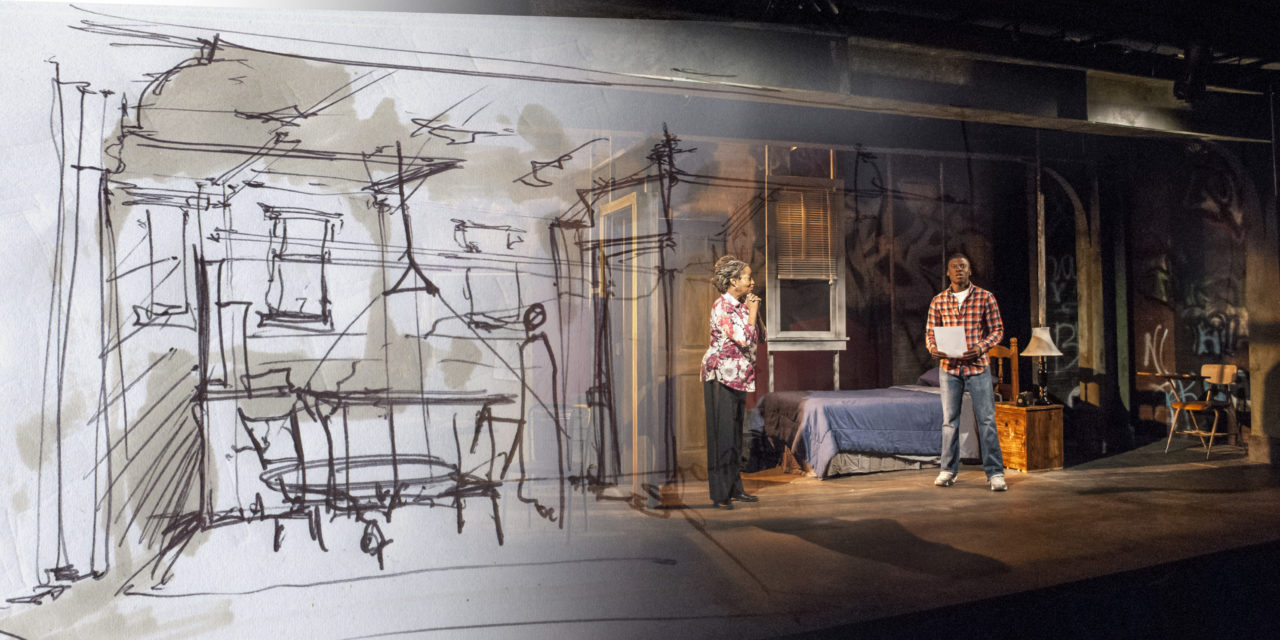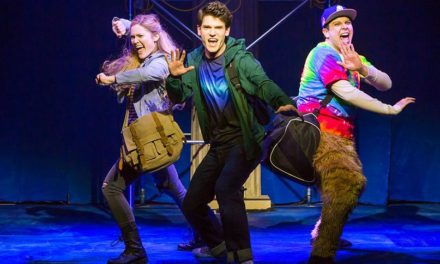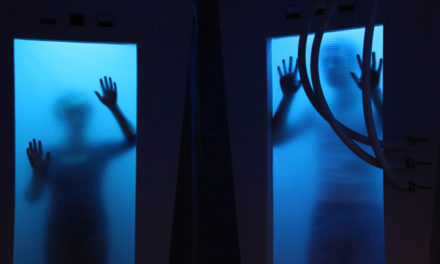Set Designers are known for creating beautiful, finished renderings of scenic environments, however, most begin their process with a quick, abbreviated drawing called a thumbnail sketch. Perhaps more like graffiti than a sketch, the Set Designer uses the thumbnail as a way to jot down an initial idea in their own handwriting.
Scenic Designer Sean Fanning shared with me his thumbnail sketch for a production of Brownsville Song (B-side for Tray) at Moxie Theatre in San Diego, CA. He had some intriguing thoughts about how a set design is incomplete without an audience and how it should remain unfinished enough to allow for evolution and change during the rehearsal process.
Michael Schweikardt: Can you put yourself back in the time and place when you made this thumbnail sketch and describe it for me?
Sean Fanning: It was the morning after I had first read the play and I was thinking about the way the Brooklyn El train dwarfs lower-slung buildings when I had an impulse. In an instant, I imagined an interior setting without walls against a textural urban background of brick and windows, all overshadowed by the constant presence of the elevated train architecture.
Michael Schweikardt: What materials did you use? What did write on? What did you write with?
Sean Fanning: Usually, I draw in a small lined notebook that I keep with me at all times. But with this sketch, I was feeling strangely nervous about committing my idea to the notebook. It needed to breathe. So I grabbed a plain sheet of printer paper and started scribbling with a black ballpoint pen and hastily shading with a translucent gray marker.
Michael Schweikardt: What were you trying to answer? What were you trying to work out?
Sean Fanning: I was trying to answer a number of compositional questions posed by a particular theatrical space. Moxie Theatre is a wide, converted space and quite low – only 10 feet to the grid. Since I wanted to incorporate overhead structural elements I needed to investigate how that would affect the overall proportions.
Brownsville Song is an elegy for a character named Tray. The setting needed to represent many facets of this young man’s life without becoming too literal and it needed to hold some sense of mystery. So I started drawing an open, perforated setting and exploring the idea of leaving the space purposefully incomplete; a space that could immediately engage the audience by causing them to ask the question “what kind of journey are we about to go on?”
Michael Schweikardt: Did you ever show this sketch to anyone else?
Sean Fanning: I never showed it to anyone.
Michael Schweikardt: Why not?
Sean Fanning: The proportions of this sketch are not accurate. In my opinion, it overpromises the height of the space in relationship to the actor. I try to be very careful to not give a director false hope up when it comes to space and volume so I don’t show them an early sketch like this one. And not having the pressure to share that first sketch with anyone but myself allows me the freedom I needed to explore.
To anyone else, the lines on this page might seem like just an unrefined scribble, but to me, they represent what I was thinking about at the time.
Michael Schweikardt: I am obsessed with that back wall. It is so beautiful and powerful. What is going on there with the graffiti and that giant pair of peering eyes?
Sean Fanning: Those eyes are actually those of the actor, Cortez L. Johnson who played Tray.
Michael Schweikardt: There is no suggestion of the back wall in the initial thumbnail sketch.
Sean Fanning: Nope, it wasn’t part of my first impulse. Later on in the process, Director Delicia Turner Sonnenberg asked me to get more specific about my use of graffiti so I started researching memorial graffiti. There is something so remarkable about the tone of that art. It’s not mournful or vengeful but it is defiant, and aware and present. It’s like the person’s spirit is staring out at everyone who walks by. So, I found Cortez’s headshot and started playing around with ways to embed his distinctive, piercing stare into the upstage wall of the set.
New conversations always emerge as Directors begin to inhabit the space in their own head that can lead to some organic refinements that really make the design better. The back wall was one of those things. For me, it became the best part of the set design.
With the amount of new technology that we incorporate in our work, there is a tendency to fully refine and “crystallize” a design too early in the process. I often find myself saying (as a disclaimer) to my collaborators, that even though a rendering may look and feel final, their input is necessary and essential.
The design should evolve and change all the way up until Opening Night. The conversation has to be ongoing.
Sean Fanning is a Southern California based set designer who specializes in scenic design for the stage. Some of his recent design credits include On the Twentieth Century, Seven Guitars, and Gypsy at Cygnet Theatre Company, Manifest Destinis, and The Oldest Boy at San Diego Repertory Theatre, Full Gallop at The Old Globe, My Mañana Comes at Marin Theatre Company, and Brownsville Song (B-side for Tray) at Moxie Theatre in San Diego, CA.
In 2016, Sean was the recipient of the first-ever Craig Noel Award for Designer of the Year.
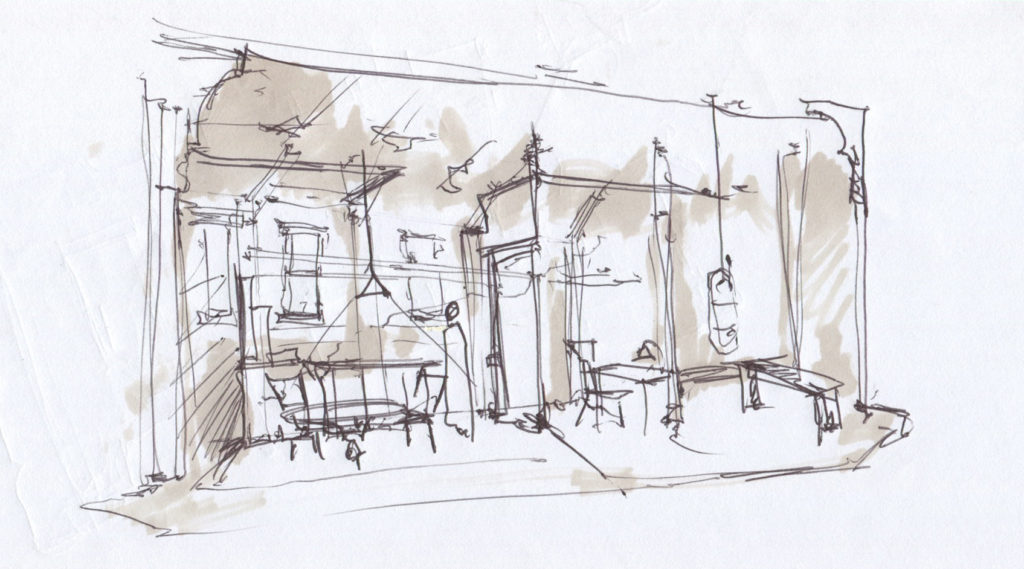
Brownsville Song (B-sides for Tray), by Kimber Lee. Sketch by Sean Fanning.
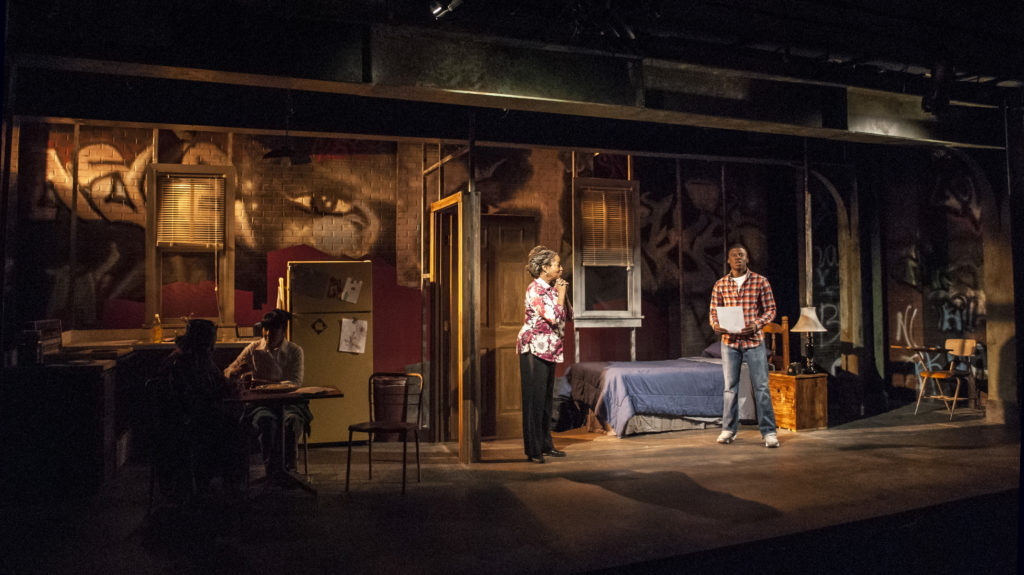
Brownsville Song (B-side for Tray), by Kimber Lee. Directed by Delicia Turner Sonnenberg, Set Design by Sean Fanning, Lighting Design by Nate Parde, Costume Design by Danita Lee, Sound Design by Emily Jankowski. Moxie Theatre, San Diego, CA, 2016.
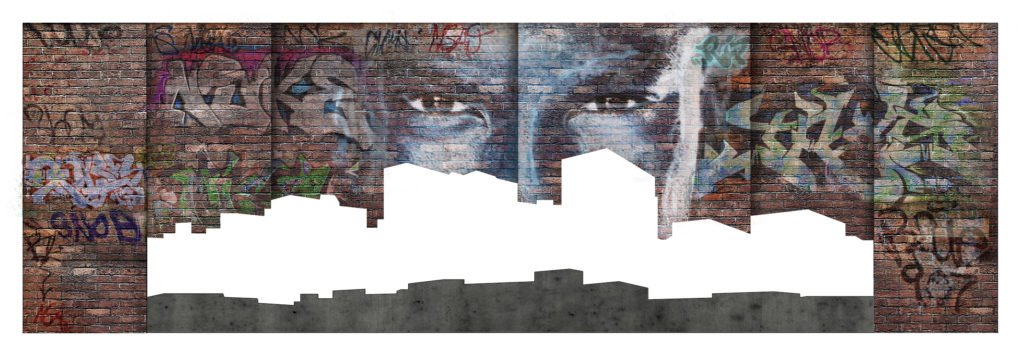
Brownsville Song (B-side for Tray), by Kimber Lee. Paint Elevation by Sean Fanning.
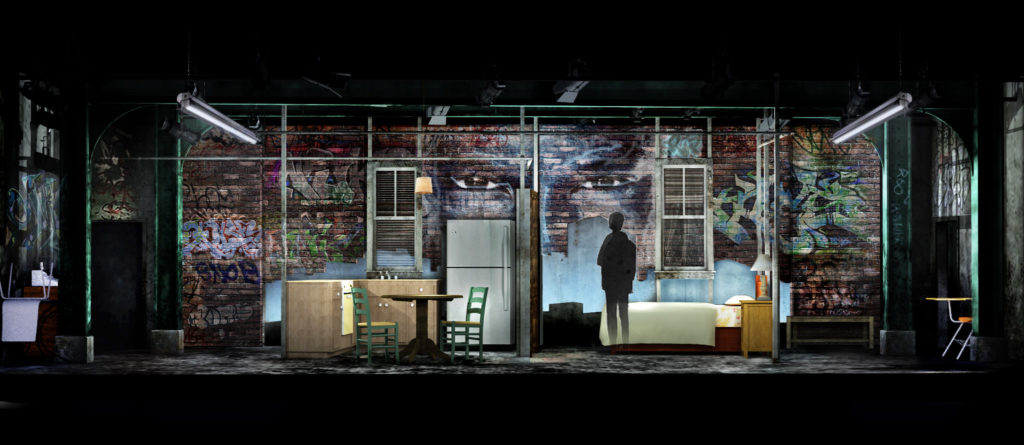
Brownsville Song (B-side for Tray), by Kimber Lee. Rendering by Sean Fanning.
http://seanfanningdesigns.com/
This post was written by the author in their personal capacity.The opinions expressed in this article are the author’s own and do not reflect the view of The Theatre Times, their staff or collaborators.
This post was written by Michael Schweikardt.
The views expressed here belong to the author and do not necessarily reflect our views and opinions.

